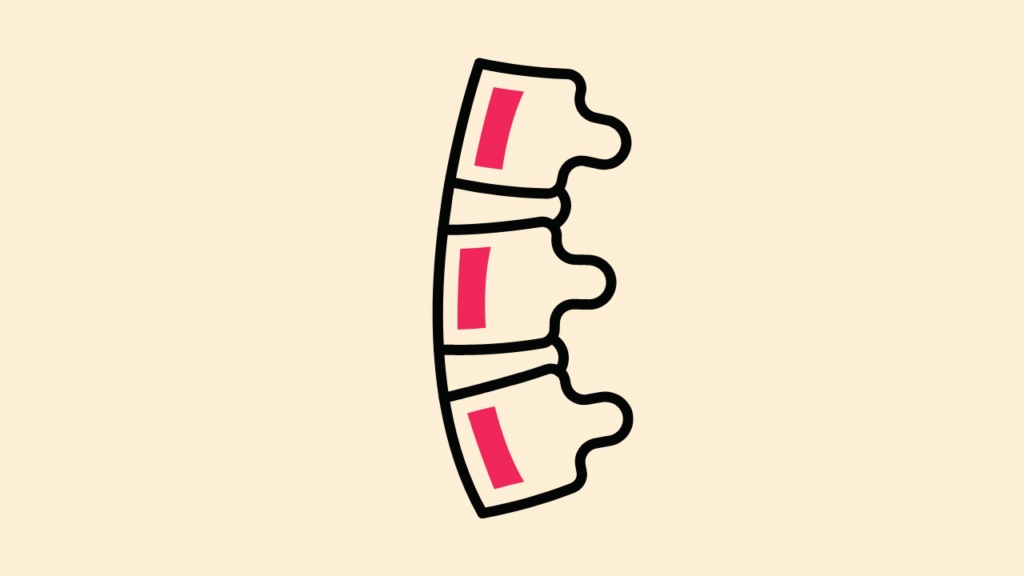Spondylolisthesis
Spondylolisthesis
Spondylolisthesis

What is Spondylolisthesis?
An out-of-place vertebra causes Spondylolisthesis when it moves too much and slips. The lower spine is usually affected. A slipped vertebra can cause Pain when it places pressure on a nerve.
Factors contributing to Spondylolisthesis
Spondylolisthesis occurs for a variety of reasons, including age, heredity, and lifestyle. The following are some possible causes:
- The Vertebrae may slip forward due to a congenital disability in the spine.
- Repetitive Strain on your Back – You may also get lower back strain while playing sports. Among these sports are football, gymnastics, and weight training.
- Ageing – As we age, our vertebrae joints lose lubrication, leading to Spondylolisthesis. The elderly are mainly affected by this.
- A Trauma/Injury – When a vertebra slips forward due to a sudden injury or trauma, the vertebrae can become affected.
Signs and symptoms
There are usually no obvious symptoms associated with Spondylolisthesis. Individuals may experience different symptoms. Imaging tests, such as X-rays, are often the only way to confirm the condition. The following symptoms are associated with this condition:
- Lower back pain.
- Legs and back are stiff.
- Pain in the thighs
- Hamstring strain
- An increase in Pain when you do some activities and a decrease when you rest
- Standing and walking can be difficult.
- Back pain that extends to your buttocks and thigh
- Feeling tingling, numbness, or weakness in one or both legs.
Does everyone suffer from Spondylolisthesis?
Your chances of developing Spondylolisthesis may increase if you have any of the following:
Athletics: Spondylolisthesis is more common in young athletes involved in lumbar spine stretching sports, such as gymnastics, football players, and weight lifters. In their Sports, they must perform extreme positions with their backs such as flipping, heavy lifting, carrying heavy items, etc. That places considerable stress on the lower back. Repeated stress on the spine may result in Spondylolisthesis.
Genetics: If you have a family member with Spondylolisthesis, i.e. Mother or Father, the likelihood that you will suffer from the condition may be higher.
Age: A weakened vertebra results from wear and tear of the spine with age. 50-year-olds are more likely to suffer from it.
What types of Spondylolisthesis are there?
Spondylolisthesis has several types:
- Congenital Spondylolisthesis – This condition is caused by an undeveloped spine in the young child. Misaligned vertebrae can cause slippage later in life.
- Isthmic Spondylolisthesis – This condition results from spondylolysis, where cracks and fractures weaken bones.
- Degenerative Spondylolisthesis – This is the most common type caused by ageing. Water gradually leaks out of the discs that cushion the vertebrae. The thin disks are prone to slipping out of place.
The following types of Spondylolisthesis are less common:
- Traumatic Spondylolisthesis – A slippage of the vertebrae that occurs as a result of an injury.
- Pathological Spondylolisthesis – This condition is driven by a disease like osteoporosis or cancer.
- Post-surgical Spondylolisthesis – Slippage that happens after a spinal operation.
Diagnosis of Spondylolisthesis
After taking a Medical History, the doctor will perform a Physical Examination. X-ray, CT scan, or MRI may also be suggested.
Spondylolisthesis Treatment
Conservative treatment –
- For two to three days, take a short break. Rest periods that are too long are not beneficial.
- Don’t bend your back when doing daily activities.
- An extra pillow between the legs would be beneficial when sleeping.
Medications –
- Treatment will begin with non-steroidal anti-inflammatory drugs (NSAIDs).
- Your doctor may prescribe stronger painkillers for you based on your condition.
Physiotherapy –
- Your lower back and hamstrings may benefit from simple stretching and strengthening exercises.
- Additionally, your Physiotherapist will recommend some exercises that would help you return to a normal routine.
Injections –
- When no satisfactory response is observed from the medication, selective nerve root injections may be recommended around the compressed nerve to decrease the Pain.
Surgery –
- The doctor may recommend surgery if non-surgical treatments fail to relieve your symptoms and you have severe, persistent symptoms or a compressed nerve.
